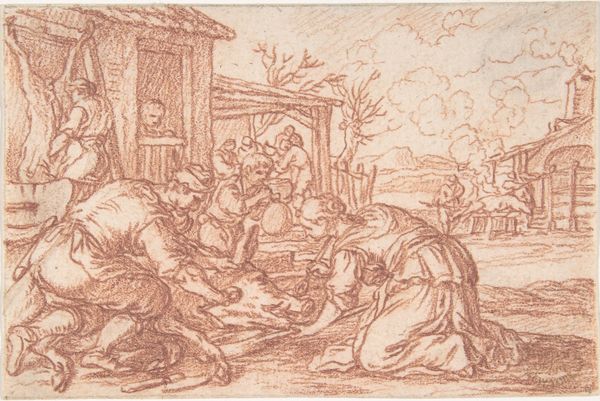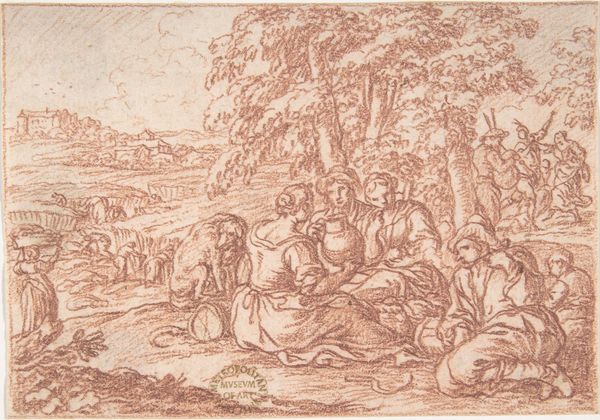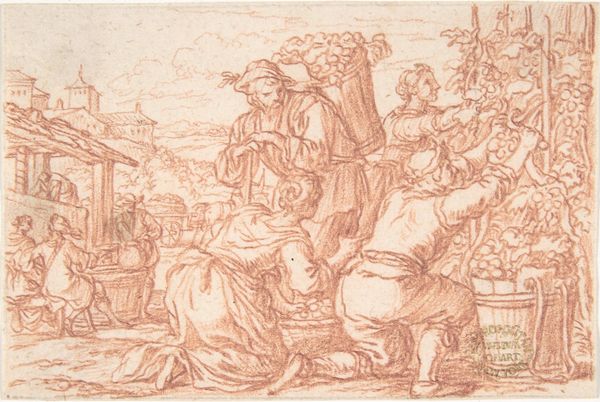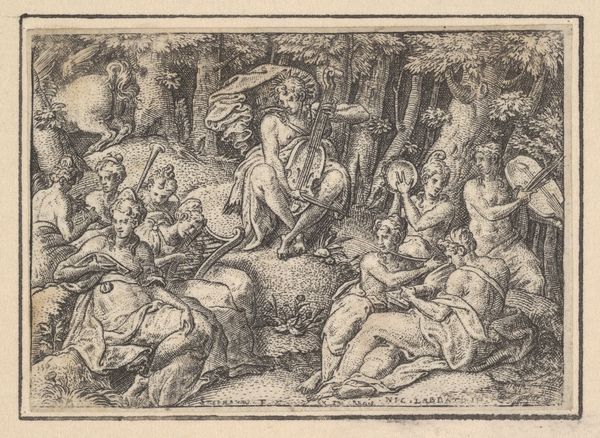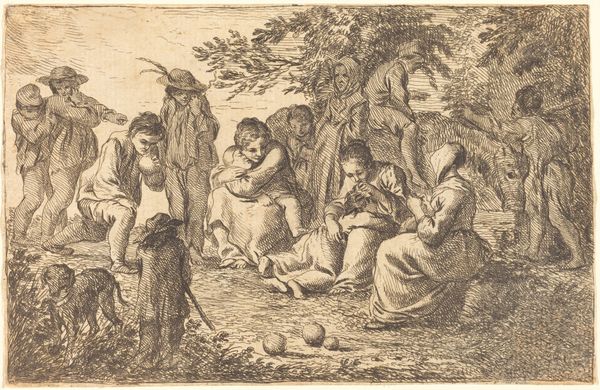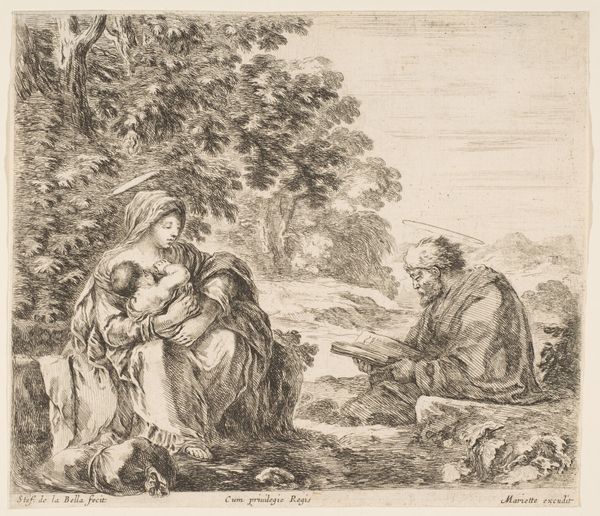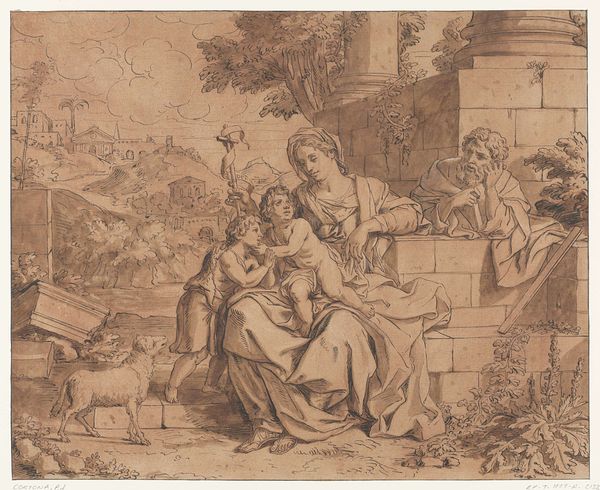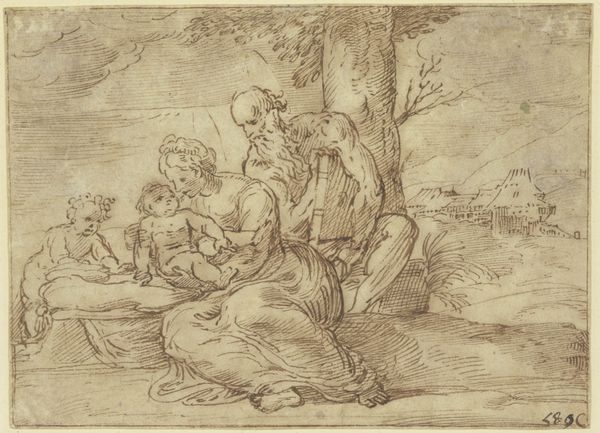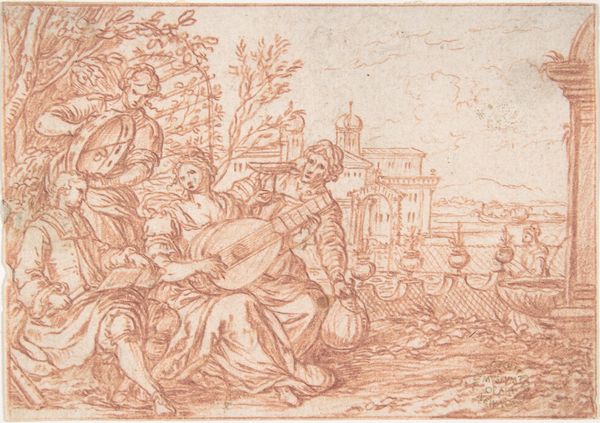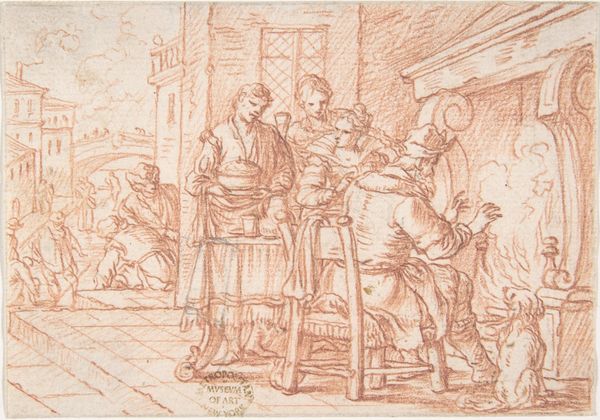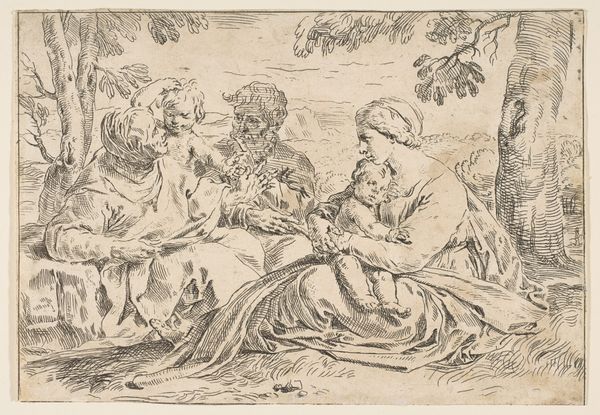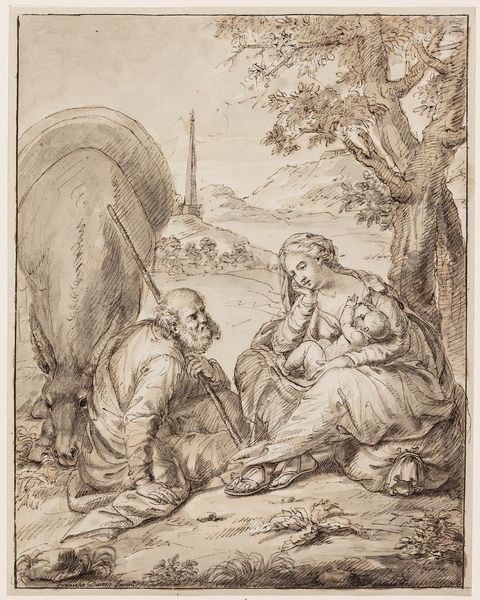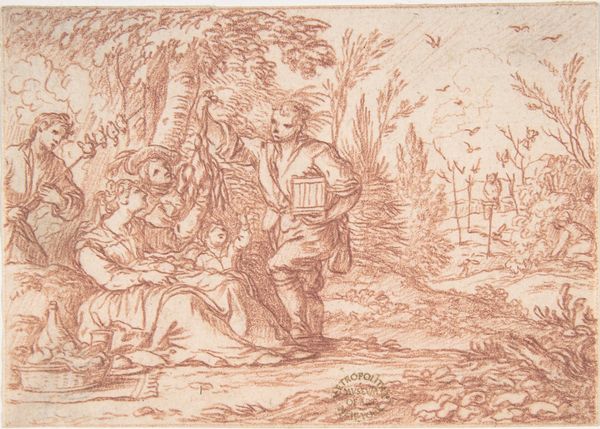
June (one of a series representing the labors of the months) 1690
0:00
0:00
drawing, print
#
drawing
#
animal
# print
#
landscape
#
men
#
history-painting
Dimensions: 3 5/16 x 4 3/4 in. (8.4 x 12.1 cm)
Copyright: Public Domain
Curator: I’m struck immediately by the labor implied in this landscape, a sort of pre-industrial pastoral idyll made real through human work. Editor: Yes, that's precisely the point of "June (one of a series representing the labors of the months)" created around 1690 by Jonas Umbach, now held in the collection of the Metropolitan Museum. Notice how the formal organization hinges on depicting a very specific kind of agricultural work. Curator: I am referring to the labor of the textile trade and it certainly is visible in the red chalk medium; the lines describing fleece create this haptic texture of material being manipulated. Editor: The visual field really opens up for me with that framing. Beyond the immediately accessible image of shepherds tending their flock. I see labor processes: sheep are sheared, the wool gathered into baskets and possibly woven or spun into yarn later. Curator: Exactly. See the placement of the figures in relation to the architecture, especially the way the forms are nestled together creating geometric relations that reflect their material processes in the foreground. Editor: So you’re suggesting the compositional structure reflects a socioeconomic one. The figures become almost architectural elements in themselves as they enact an entire small scale textile production economy. Curator: Precisely! The linear marks activate this relationship between the domestic, agriculture and textile industries creating the spatial effect while building visual associations. It moves beyond pure pastoral to become a reflection on early economic labor systems and material transformation, from sheep to textile to commodity. Editor: Fascinating! My appreciation has certainly deepened after analyzing those layered connections. Curator: Likewise! The power of careful looking shows that the compositional elements reveal that historical insight on textile economy.
Comments
No comments
Be the first to comment and join the conversation on the ultimate creative platform.
